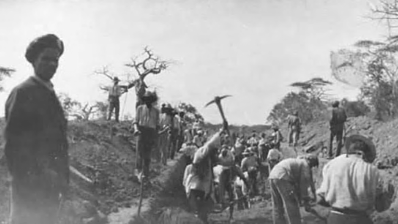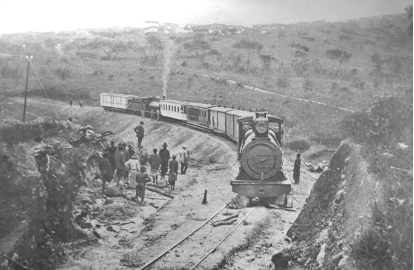Communication
Building the Benguela Railway: laborers and construction skills
Event: The Society of Architectural Historians 78th Annual International Conference
Author: Beatriz Serrazina
Date: 30 April 2025 – 4 May 2025
Location: Atlanta, United States of America


Summary
The Benguela Railway represents one of the most significant mobility
infrastructures developed during the Portuguese colonial period in Angola. The railroad was constructed between 1883 and 1931. The primary objective of the project was to establish a transportation network connecting the Lobito Port in Angola to the mineral- rich region of Katanga in the southern region of the former Belgian Congo. The construction was overseen by a private English company, yet it consistently received substantial support from the colonial state, particularly in terms of recruiting labor.
A substantial body of research has been conducted on the political, economic, social, and territorial impacts of the Benguela Railway. The project’s promotion facilitated significant inter-imperial connections, the establishment of new settlements along the route, and the creation of an important transportation corridor that would serve a large area extending over 1,800 kilometers. However, the role and building skills of the thousands of African workers who participated in the construction of this line and associated buildings remain to be evaluated.
This presentation aims to examine the impact of African workers on the building sites, mobile yards, and tasks along the construction of the Benguela Railway. The diversity of political, economic, and technological factors in this case study will be employed to examine the nature and evolution of the concept of “skill”. In particular, the paper will focus on the types of skills developed by the workers and the changes in discourse surrounding those skills over time and across diverse geographical locations. What insights can be gained from a more nuanced perspective that extends beyond the dichotomy of skill versus unskilled? The research will identify and compare information from different sources, including reports produced by the company and colonial inspectors, drawings, and photographs.
Related Case Studies

